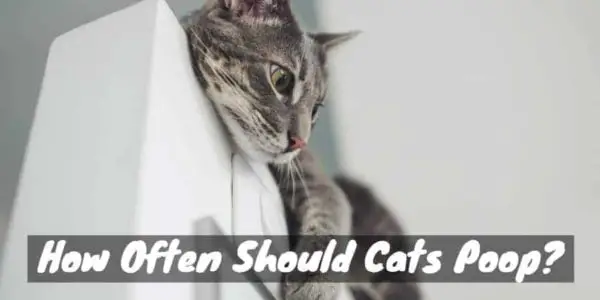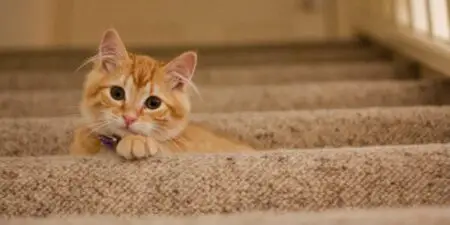A common concern among cat owners is understanding their pet’s litter box habits, specifically: how often should cats poop? While the answer can vary, a general guideline is that a healthy adult cat should pass stool once a day.
A typical bowel movement should be brown in color, firm without being too hard, and should be passed without any struggle or discomfort. Several factors can influence a cat’s bowel movements, including:
- The cat’s age
- The composition of the cat’s diet
- The frequency of feeding
- The cat’s activity level
- Any underlying medical conditions that could affect gut health and motility
- The presence of any medications the cat may be taking
If there are changes in the cat’s regular defecation pattern that persist for more than a couple of days, it is advisable to consult a veterinarian. This will help ensure that these variations are not indicative of underlying health issues.
[amazon bestseller=”cat automatic litter box”]
Red Flags in the Litter Box

Some variations require immediate veterinary attention. These are signs of greater problems within the cat’s systems and could be linked to fatal conditions. Be on the lookout for these while cleaning the litter box or observing the feline while about his or her business.
Blood in the Stool
Blood can be hard to detect in the stool, depending on from whence it originates. Blood from the large intestine or rectal region will be bright red and fairly easy to spot. Blood originating from higher up within the intestinal tract will be brown or black.
Both diarrhea and constipation can be the cause of blood in a cat’s defecation. Other causes include inflammatory bowel disease, food intolerance after a dietary change, Giardia and other intestinal parasites, trauma or abscesses, infections, anal gland abscesses, idiopathic feline megacolon, rectal tumors or polyps, toxins or poisons, or even cancer. Bloody stool should be collected and taken to the veterinarian for testing, along with the ailing feline.
Straining to Urinate
If you notice your cat using undue force or straining while in the litter box, be sure the effort is for a bowel movement and not for urination. A cat that cannot pee is a cat that does not have long to live. Head directly to the veterinarian.
Prolonged Constipation
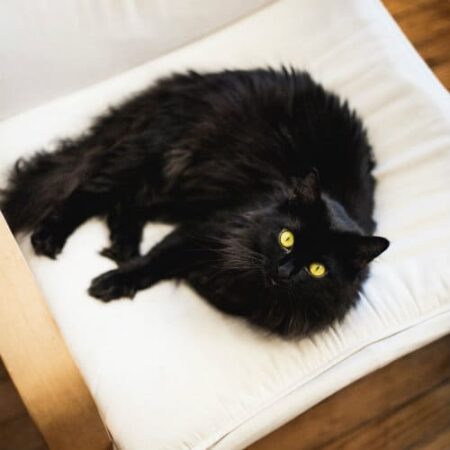
Constipation now and then, and for short periods, is not something to worry about. But prolonged constipation should be addressed by a veterinarian. Check for symptoms such as infrequent or complete lack of defecation, straining while trying to defecate, feces that are dry and hard, pooping outside of the litter box, feces in small quantities, liquid feces in small quantities with blood or mucus, lack of appetite, and even vomiting.
Helping in the Litter Box
Sometimes a devoted cat owner comes across the question of whether or not to help the companion feline with litter box woes. This might be for constipation, or it might be because there is a string or thread or some other dangling object coming out with the fecal matter. The answer as to whether or not to help varies.
[amazon bestseller=”self cleaning litter box”]
Enemas – Do Not Try This at Home
Some people decide to take matters into their own hands and attempt to give their feline friend an enema. Never do this. Not only can it end up with your face and arms shredded by indignant and terrified claws, but it is also possible to kill your cat attempting this.
String in the Stool – Should You Pull?
Cats are drawn to stringy things, whether it’s yarn, string, dental floss, tinsel from a Christmas tree, ribbon, or the like. When the object has run its way through the cat’s digestive system and is hanging out from the cat’s rectum in the midst of the bowel movement, the question arises as to whether or not a responsible cat owner should assist by pulling.
The answer is that it is acceptable to try pulling a very little, very gently. If it comes free, then the problem is solved. If it does not, a trip to the veterinarian might be in order, especially if there is any resistance whatsoever.
The danger in pulling too much, too hard, is that the stringy object might be wrapped around part of the digestive system or embedded inside the lining of the cat’s intestines. Continuing to pull when there is resistance could lead to intestinal tears or damage to the rectum. This could result in infection, pain, or intestinal content leakage into the abdominal cavity.
Basic Reasons the Stool Timing May Vary
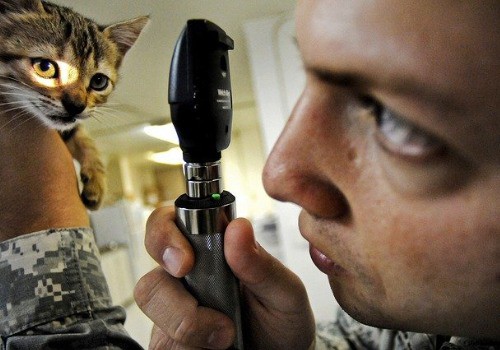
Not every cat is going to experience the average of passing a bowel movement once a day. There are several reasons for these variations. If one or more of these potential reasons applies, it is not necessary to worry or consider a trip to the veterinarian just yet.
Feline Age
Age plays a large role in how often a cat passes a bowel movement. Kittens, for example, will defecate far more often than adult cats. In fact, kittens often poop each time they eat.
Activity Levels
Cats who are extremely active will pass bowel movements slightly more often than cats who live largely sedentary lives. It is helpful to note that exercise can help move things along when a cat is experiencing constipation. Cats who prefer to spend their days napping rather than getting full exercise may not pass the average one bowel movement per day, but this is not an occurrence that should rouse cause for alarm.
[amazon bestseller=”Cat Litter”]
Dietary Matters
The diet also has an impact on how often a cat visits the litter box for a bowel movement. Cats who subsist mainly on dry food will poop less frequently than those who eat largely wet food. Those felines who are given a diet of a combination of the two are more likely to defecate daily.
Medical Conditions

Some underlying health conditions will have an impact on how often a cat poops. These include parasites such as intestinal worms, hyperthyroidism, inflammatory bowel disease, chronic kidney disease, or pain caused by whatever reason. A whole host of various other conditions can also be a root cause of having a bowel movement either more or less frequently than on average.
Medications
Some supplements or medications can have an impact on how fast food passes through the digestive system. This gut motility is often impacted by particular pain medications.
[amazon bestseller=”Cat Litter Scoop”]
Feline Digestive System
A cat’s digestive system includes each and every organ involved in processing and taking in food. The whole thing begins with the cat’s mouth and goes on to include the anus, rectum, intestines, liver, stomach, pancreas, and esophagus, in no particular order. The digestive process begins when the cat takes food into his or her mouth and starts chewing.
When chewing, saliva enzymes begin the chemical process of breaking the food down. This process is continued with the swallowing of the food and its additional breakdown in the cat’s stomach, the nutritional absorption that takes place in the intestines, and finally the defecation or elimination of waste. Digestion is crucial; this goes beyond providing nutrients but also maintains the ideal balance of electrolytes, salts, and fluid in the cat’s body.
Proper Appearance of Feline Poop
A healthy cat’s bowel movements will have a few considerations in common. First, the color: tan to deep brown in hue. The consistency will be firm, but not too hard, and certainly not mushy or runny, and while some odor is acceptable, it should not smell overly foul.
Treating Constipation
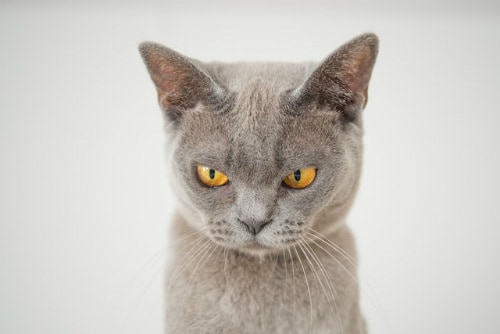
If your cat is experiencing constipation, there are a couple of home activities that can be undertaken before worrying about visiting the veterinarian. One is to provide more opportunities for exercise for the cat, making sure to spend plenty of time playing and giving the cat a chance to exert itself. Adding some fiber, such as canned pumpkin, is another solution that a veterinarian might suggest before going to such efforts as laxatives.
Treating Diarrhea
In the case of diarrhea, fiber is again a home solution to help treat the uncomfortable, messy, and smelly condition, but in this case, the solution is to go on a low-fiber diet. Do not withhold food from the feline, but consider changing up the cat’s food. Always encourage the intake of plenty of water and electrolytes.
A lot can be told about a cat’s health by considering the number of times the cat defecates and the condition of the poop. Regular cleanings of the litter box will give immediate clues as to changes in the cat’s health, as well as encouraging the cat to continue using the box instead of going somewhere outside of it. Drastic changes, or changes that persist over a number of days, should be taken up with a veterinarian.
[amazon bestseller=”cats modern litter box”]
Conclusion
Well, I hope this article wasn’t more than you bargained for. It’s certainly discussing topics that can be difficult for people to speak aloud. If you find yourself here, I suspect it’s time to seek out the opinion of a veterinarian.
Does Your Cat Hate the Litter Box? (Video)
"In ancient times cats were worshipped as gods; they have not forgotten this."
-- Terry Pratchett

